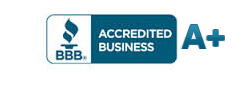|
By Petra Paulson
Surveillance Systems and CCTV: The History of Closed-Circuit TelevisionClosed-circuit television (CCTV), a security monitoring system that consists of multiple video cameras, transmits a signal to a specific location equipped with a series of monitors. Closed-circuit television encodes data and then transmits it through point-to-point (P2P), point-to-multiple points, or meshed wireless links. Commercial establishments, such as banks, casinos, airports, shopping malls, military installations, and convenience stores, employ CCTV surveillance equipment to deter criminal activity. Closed-circuit television can be used for other applications, such as to observe the mechanical process in a central control room of an industrial plant, or to televise distance educational courses to students from around the world. CCTV systems may include advanced equipment, such as digital video recorders (DVRs), with an array of quality and performance options that detects and disperses email alerts to its base stations. Other CCTV cameras have built-in megapixel sensors that support recording to network-attached storage units. This surveillance equipment has been employed across the world, especially in highly developed industrial nations. History In 1942, the first closed-circuit television system was installed by Siemens AG, strictly for the observance of launching V-2 rockets. It was designed by German engineer Walter Bruch. In 1949, the United States manufactured and released Vericon, the first CCTV recording system, which did not require a government permit to own and operate. Closed-circuit television recording systems are still used to monitor launch sites for possible causes of malfunctions. In 1973, the New York Police Department (NYPD) installed the first CCTV in Time Square in New York City in order to deter criminal activity that occurred in the area; however, it remarkably had no effect on curtailing criminals. During the 1980's, video surveillance spread across the United States in highly trafficked areas as a cost effective alternative to expanding existing police departments. In addition, some business establishments used CCTV surveillance systems to monitor shoplifting. During the 1990's, digital multiplexing allowed a series of cameras to simultaneously record, set time lapse, and motion-only preferences. In addition, police departments across the country installed a growing number of cameras in numerous public places, including educational institutions, public park departments, housing projects, social venues, and sporting events. After the attacks on the World Trade Center, the use of closed-circuit television became a common occurrence in the United States to deter further terrorist attacks. Uses According to a recent analysis conducted by the Northeastern University and the University of Cambridge, CCTV systems were effectively employed in parking lots, public transportation areas, and public settings. In addition, closed-circuit surveillance systems had a higher success rate in certain countries, such as the United Kingdom. The study revealed that the overall success of these CCTV systems depended greatly upon a combination of factors. For instance, the high success rate of closed-circuit television systems in parking lots may be due to the fact that parking lots have more cameras per square inch than public transportation areas. Closed-circuit television technology assists in the detection and conviction of offenders by tracing the movements of suspects or victims. In addition, CCTV systems have been successfully used to track suspected terrorists, a surveillance protocol dating back to the 1970s. CCTV cameras have also been installed on public transportation vehicles, with hopes of deterring crime. Law enforcement departments have used CCTV cameras as an adjunct to equipment installed in mobile police surveillance vans. Other CCTV applications vary according to the wants and needs of the individual business establishment. CCTV & Privacy Critics of CCTV systems assert that surveillance technology infringes on an individual's right to privacy; therefore, it has a negative impact on national civil liberty. To further expound on the previous sentiment, opponents argue that CCTV simply causes criminals to reinvent their strategies. They have even drawn analogies with “Big Brother,” a surveillance society depicted in George Orwell's classic book entitled “1984.” Proponents of CCTV cameras believe that the cameras do not infringe upon individual privacy, because CCTV surveillance only records public space; however, the United States Supreme Court cites “Katz v. United States” as evidence that protects individual privacy in public places. Anti-surveillance activists have raised questions about illegal access to CCTV recordings. Several legislation attempts in the United Kingdom have aimed to restrict the uses of CCTV recordings, and mandated their registration with the Data Protection Agency. The ever-expanding CCTV technology has increased public awareness with its advanced features that allow them to identify, track, and categorize objects in real-time, such as video content analysis (VCA) and facial recognition systems. Technology Developments High-definition CCTV cameras have various computer controlled technologies that perform a wide array of processes. For instance, video content analysis automatically analyzes video to detect events not based on a standalone image. A CCTV system that uses visual content analysis can recognize, identify, and compare objects in the database using its size, speed, and color. The camera's actions largely depends on what the equipment “sees.” In other words, a programmed alarm may sound if an object has moved from a specific spot. In addition, VCA technology can also detect unusual patterns in a video's environment. Users can set the CCTV system to detect behavioral abnormalities in a crowd of people. For instance, if a person moves in the opposite direction in airports where the normal flow of traffic occurs, then the camera operator can zoom in on the person to monitor for suspicious behavior. VCA technology may also track people on a map by calculating their position from standalone images. This makes it possible to link a series of cameras and track a person through a spacious area. This grants the ability to follow an individual without having to analyze their every move. A facial recognition system automatically identifies or verifies an individual from a digital image or video frame from a specific video source. It compares an individual's facial features from the image and facial database. Surveillance companies who combine CCTV and facial recognition systems have used it as a form of mass surveillance; however, many of these companies have rejected the combination, mainly because of the high number of false positives it generated. Despite its failure, many proponents have advocated its use at air and seaports of those suspected terrorists and other undesirables. CCTV companies have made an effort to incorporate computerized monitoring to eliminate the necessity for a human CCTV operator. This should allow for easy data transmission via Internet Protocol (IP) cameras that transmit video across interlinked data networks in digital form. CCTV Resources
|





